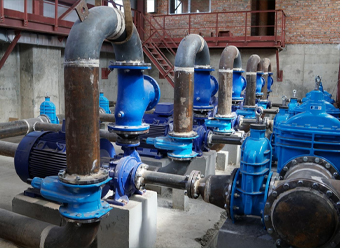English
- Afrikaans
- Albanian
- Amharic
- Arabic
- Armenian
- Azerbaijani
- Basque
- Belarusian
- Bengali
- Bosnian
- Bulgarian
- Catalan
- Cebuano
- Corsican
- Croatian
- Czech
- Danish
- Dutch
- English
- Esperanto
- Estonian
- Finnish
- French
- Frisian
- Galician
- Georgian
- German
- Greek
- Gujarati
- Haitian Creole
- hausa
- hawaiian
- Hebrew
- Hindi
- Miao
- Hungarian
- Icelandic
- igbo
- Indonesian
- irish
- Italian
- Japanese
- Javanese
- Kannada
- kazakh
- Khmer
- Rwandese
- Korean
- Kurdish
- Kyrgyz
- Lao
- Latin
- Latvian
- Lithuanian
- Luxembourgish
- Macedonian
- Malgashi
- Malay
- Malayalam
- Maltese
- Maori
- Marathi
- Mongolian
- Myanmar
- Nepali
- Norwegian
- Norwegian
- Occitan
- Pashto
- Persian
- Polish
- Portuguese
- Punjabi
- Romanian
- Russian
- Samoan
- Scottish Gaelic
- Serbian
- Sesotho
- Shona
- Sindhi
- Sinhala
- Slovak
- Slovenian
- Somali
- Spanish
- Sundanese
- Swahili
- Swedish
- Tagalog
- Tajik
- Tamil
- Tatar
- Telugu
- Thai
- Turkish
- Turkmen
- Ukrainian
- Urdu
- Uighur
- Uzbek
- Vietnamese
- Welsh
- Bantu
- Yiddish
- Yoruba
- Zulu
Telephone: +86 13120555503
Email: frank@cypump.com
Oct . 01, 2024 14:36 Back to list
Understanding the Importance of Septic Pump Tanks for Efficient Wastewater Management
Understanding Septic Pump Tanks A Comprehensive Overview
Septic systems are essential components of waste management for homes and buildings that are not connected to a centralized sewer system. At the heart of these systems lies the septic tank, which plays a crucial role in treatment and filtration of wastewater. However, for many septic systems, particularly those on sloped terrain or in areas with high groundwater, septic pump tanks are also necessary. In this article, we’ll explore what septic pump tanks are, how they function, and their importance in maintaining a healthy septic system.
A septic pump tank is a specially designed holding tank that receives effluent from the primary septic tank. Its primary function is to lift wastewater to a higher elevation, allowing it to flow to the drain field or leach field effectively. This is particularly important in areas where gravity alone is insufficient to move the wastewater, as is often the case in hilly regions or locations with a high water table.
Septic pump tanks typically contain a submersible pump that activates based on the water level inside the tank. When the effluent reaches a predetermined level, the pump kicks in, sending the treated wastewater through pipes into the drain field. This process helps to prevent the backup of wastewater in the system and ensures that sewage is adequately dispersed and treated in the soil, thereby minimizing the risk of system failure.
septic pump tanks

The design and components of septic pump tanks can vary
. Generally, they are constructed from durable materials such as polyethylene or concrete, which can withstand the corrosive nature of wastewater. Many septic pump tanks also include alarms that alert homeowners to potential issues, such as pump failure or an overflow situation, which can prevent costly damage and keep the system functioning smoothly.Maintenance of septic pump tanks is crucial to ensure their longevity and effectiveness. Homeowners should regularly check the pump and the tank to ensure they are operating correctly. This includes inspecting the alarm systems, maintaining proper liquid levels, and having the pump serviced or replaced as needed. Additionally, septic systems should be inspected by a professional every three to five years to assess the health of the entire system, including the pump tank.
Proper care and maintenance can not only prolong the life of the septic pump tank but also contribute to the overall health of the septic system. Neglecting the pump or failing to address issues can lead to significant problems, such as backups, costly repairs, or system failures that can contaminate groundwater.
In conclusion, septic pump tanks play a critical role in many septic systems, particularly in challenging terrains. Understanding their function and importance in wastewater management can help homeowners maintain a healthy septic system and avoid potential issues. Regular maintenance, attention to alarms, and timely inspections are vital in ensuring that septic pump tanks operate efficiently and effectively, thus safeguarding the environment and promoting public health. By being proactive about their septic systems, homeowners can protect their investment and maintain a clean and safe living environment.
-
ISG Series Vertical Pipeline Pump - Chi Yuan Pumps Co., LTD.|High Efficiency, Energy Saving, Low Noise
NewsJul.30,2025
-
ISG Series Vertical Pipeline Pump- Chi Yuan Pumps|High Efficiency&Low Noise
NewsJul.30,2025
-
ISG Series Vertical Pipeline Pump-Chi Yuan Pumps Co., LTD.|High Efficiency&Energy Conservation
NewsJul.30,2025
-
ISG Series Vertical Pipeline Pump - Chi Yuan Pumps Co., LTD.|Advanced Hydraulic Design&Energy-Efficient Solutions
NewsJul.30,2025
-
ISG Series Vertical Pipeline Pump - Chi Yuan Pumps Co., LTD.
NewsJul.30,2025
-
ISG Series Vertical Pipeline Pump - Chi Yuan Pumps Co., LTD.|energy-efficient fluid handling&industrial durability
NewsJul.30,2025










